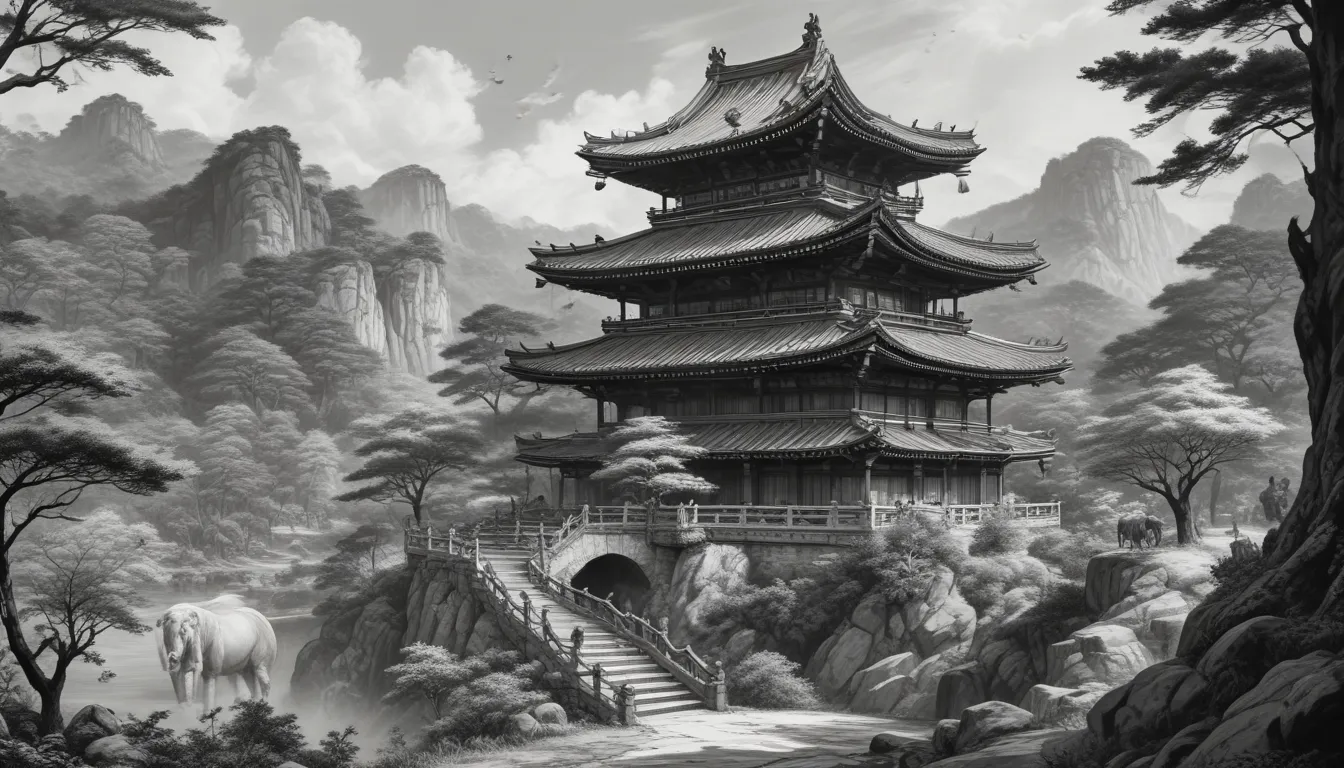The images in our articles are for illustrative purposes only and may not exactly match the content. They are intended to capture your interest and complement the text, not to replace it.
Nara, the ancient capital of Japan, is a treasure trove of history and culture that beckons travelers with its picturesque scenery, traditional architecture, and abundant natural beauty. Let’s embark on a virtual journey through 39 captivating facts about Nara, unveiling its storied past, iconic landmarks, and unique customs. From the majestic temples and shrines to the friendly deer roaming in Nara Park, there’s a world of wonders waiting to be discovered in this enchanting city.
Unveiling the Ancient Capital of Japan
- Establishment of Nara: The city of Nara was established in 710 AD, serving as the capital of Japan during the Nara period, making it the country’s first permanent capital.
- Todai-ji Temple: Nara is home to the famous Todai-ji temple, a Buddhist marvel recognized as one of the largest wooden buildings globally, housing the largest bronze statue of Buddha in Japan.
- Great Buddha of Nara: Standing at a towering height of 15 meters, the Great Buddha of Nara symbolizes peace and compassion, attracting millions of visitors annually.
Embracing Nature and Culture in Nara
- Nara Park: Renowned for its friendly deer population, Nara Park is a delightful sanctuary where visitors can interact with these revered creatures.
- Feeding the Deer: Engage in the popular tourist activity of feeding deer in Nara Park with special deer crackers known as “shika-senbei.”
- Kasuga Taisha Shrine: Explore the stunning vermilion-colored buildings and hundreds of stone lanterns at this UNESCO World Heritage site in Nara.
Exploring Spiritual Treasures and Artistry
- Abundance of Temples and Shrines: Nara boasts over 2,000 temples and shrines, showcasing its rich spiritual and cultural heritage.
- Nara National Museum: Delve into a collection of Buddhist art, including ancient sculptures, paintings, and artifacts that offer insightful glimpses into Japan’s artistic traditions.
- Traditional Crafts: Discover Nara’s traditional crafts, such as lacquerware, pottery, and woodwork, showcasing the meticulous craftsmanship of local artisans.
Celebrating Nara’s Vibrant Traditions
- Cherry Blossoms: Witness Nara’s stunning cherry blossoms during spring, painting the city in vibrant shades of pink and creating a breathtaking spectacle.
- Nara Period: Experience the cultural shift during the Nara Period, marking the introduction of Buddhism to Japan and laying the foundation for the country’s development.
- Horyu-ji: Visit the UNESCO World Heritage Site of Horyu-ji, showcasing Japan’s architectural prowess with important Buddhist relics.
Immersing in Nara’s Festivals and Cuisine
- Todai-ji Omizutori Festival: Partake in Nara’s annual lantern festival, a religious ceremony involving massive flaming torches hung from the balcony of Todai-ji temple.
- Local Delicacy: Indulge in “kakinoha-zushi,” sushi rolls wrapped in persimmon leaves, visually appealing and delectable.
- Yamayaki Festival: Witness the unique spectacle of setting fire to the mountainside during Nara’s annual “Yamayaki” festival, creating a stunning display against the night sky.
Cherishing Nara’s Arts and Traditions
- Gagaku Music: Discover “Gagaku,” Nara’s traditional music, considered one of the oldest forms of orchestra music globally, rich in history and cultural significance.
- Yoshikien Garden: Wander through the three distinct styles of Japanese gardens at Yoshikien Garden, offering a tranquil oasis amidst the city’s hustle and bustle.
- Sento-kun Mascot Contest: Engage in the fun-filled tradition of the “Sento-kun” mascot contest, an event that unites participants in creating unique city mascots.
Preserving Cultural Heritage in Nara
- National Research Institute: The Nara National Research Institute for Cultural Properties plays a pivotal role in preserving the city’s cultural heritage through research, conservation, and restoration projects.
- Traditional Festivals: Experience the vibrant celebrations of Nara’s traditional festivals with colorful processions, showcasing traditional costumes, music, and dance.
- Naramachi District: Explore the ancient past of Nara at the Naramachi district, offering well-preserved traditional machiya houses, narrow streets, and quaint shops.
Engaging with Nara’s Natural Beauty
- Mount Wakakusa: Ascend Mount Wakakusa for a breathtaking panoramic view of the city, where you can witness spectacular sunsets or admire the city lights at night.
- National Forest: Embark on a nature adventure in the Nara National Forest, spanning over 1,000 hectares and offering beautiful hiking trails and wildlife spotting opportunities.
Delving Deeper into Nara’s Cultural Marvels
- Papermaking Tradition: Witness the traditional art of papermaking, known as “washi,” renowned for its durability and versatile uses in art, calligraphy, and bookbinding.
- Nara Palace Site: Explore the grandeur of the Nara Palace Site, once the residence of Japan’s emperors, offering a glimpse into ancient Japanese architecture.
- Kagura Dance: Immerse yourself in the traditional dance of “Kagura,” performed at various festivals in Nara, blending storytelling, music, and intricate movements.
Planning Your Visit to Nara
Unravel the treasures of Nara on a day trip from nearby cities like Kyoto and Osaka, immersing yourself in the city’s rich history, cultural abundance, and natural splendor. Whether you’re exploring the grand temples, wandering through ancient districts, or savoring traditional cuisine, Nara promises a memorable and enriching experience for all travelers.
Pack your bags, set out on an adventure to Nara, and uncover the 39 fascinating facts about this captivating city firsthand. Create unforgettable memories amidst the blend of ancient traditions and modern charm that define Nara’s timeless allure.
Experience the Timeless Charm of Nara
Nara’s captivating blend of history, culture, and natural beauty continues to enchant visitors worldwide. Whether you’re drawn to the spiritual tranquility of ancient temples or the vibrant festivities of traditional festivals, Nara offers a tapestry of experiences waiting to be explored. Immerse yourself in the charming streets, cultural treasures, and welcoming atmosphere of Nara, leaving you captivated and eagerly anticipating your next visit.
As you journey through Nara’s past and present, discover the magic of this city through its extraordinary history, iconic landmarks, and enduring traditions. Let Nara’s timeless charm captivate your senses and inspire a deep appreciation for the wonders that await in this remarkable destination.
FAQs: Unveiling Nara’s Charms
- How to Get to Nara? – Easily accessible by train from Kyoto or Osaka, Nara is just a one-hour journey with frequent train services available throughout the day.
- Must-Visit Attractions in Nara? – Explore Todaiji Temple, Nara Park, Kasuga Taisha Shrine, and Isuien Garden for a comprehensive Nara experience.
- Feeding Deer in Nara Park? – Yes, you can feed the friendly deer in designated areas with specially made deer crackers.
- Nara for Day Trips? – Absolutely, Nara is perfect for a day trip from Kyoto or Osaka, offering a compact yet enriching visit.
- Traditional Events in Nara? – Experience traditional events like the Omizutori Festival and Shuni-e Ceremony at Todaiji Temple.
- Cuisine in Nara? – Indulge in traditional Japanese cuisine at local restaurants, savoring authentic flavors and culinary delights.
- Hiking Trails in Nara? – Explore beautiful hiking trails on Mount Yoshino and Mount Wakakusa, offering panoramic views and nature encounters.
- Best Time to Visit Nara? – Spring (March to May) and autumn (September to November) are ideal for pleasant weather and blooming cherry blossoms or autumn foliage.
- Traditional Craftsmanship in Nara? – Witness traditional craftsmanship in lacquerware and woodworking, visiting workshops and galleries for immersive experiences.
- English in Nara? – While not universally spoken, major tourist attractions, hotels, and restaurants in Nara have English-speaking staff for visitor assistance.
Unveil the rich tapestry of Nara’s history, culture, and natural wonders, as you embark on a journey of discovery and wonder in this enchanting city. From ancient temples to vibrant festivals, Nara invites you to immerse yourself in an authentic Japanese experience like no other. Embrace the timeless charm of Nara and let its captivating allure leave an indelible mark on your travels.






